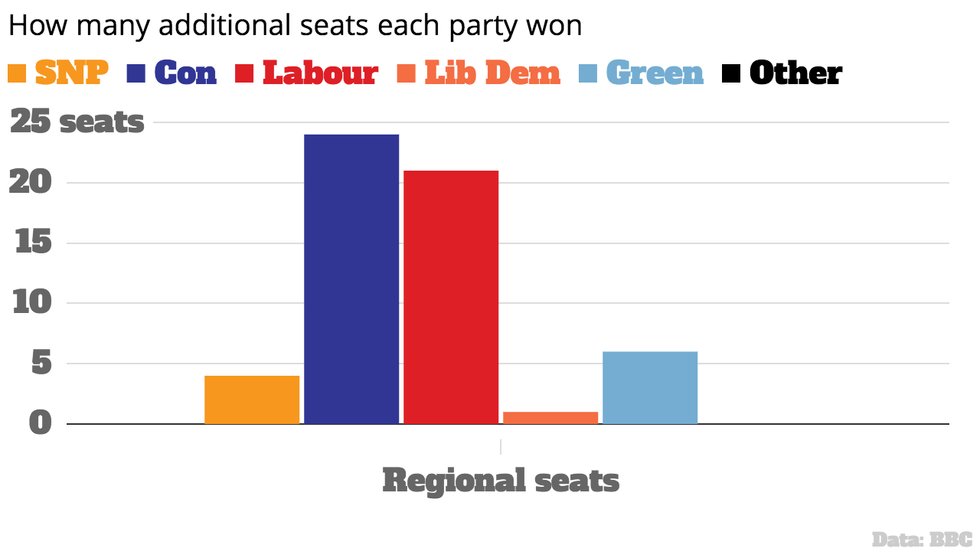News
Louis Dor
May 06, 2016

The Scottish Parliament elections results are in, and it was a good night for the Conservatives.
While the SNP won 63 seats - six fewer than in 2011 - and look set to form a minority government, Ruth Davidson's Tories won 31 seats - 16 more than in 2011 - to become the country's second largest party.
However, the Conservatives actually won fewer votes than Labour:
So how did they beat Labour?
If you're unfamaliar with the Scottish electoral system, it's an additional members system and encourages approximate proportional representation.
Essentially there are 73 constituencies and 129 seats. The constituencies elect 73 MSPs using a first past the post system, and each of the eight regions, into which the 73 constituencies are divided, elects an additional seven MSPs to encourage proportional representation.
Essentially, if you win a lot of the constituency seats but not much of the vote-share in each region, you won't get many additional members, and vice versa depending on your vote-share in the region.
Labour had more vote-share across the country than the Conservatives, but this did not translate to winning additional members.
If vote-share translated directly to seats, this is what things would look like:
And this is the difference to how they actually are - Labour and Lib Dems both have five fewer seats than if it were done by vote-share alone.
But it isn't, and now Labour are only the third largest party in Scotland.
More: Britain first admits it probably got absolutely destroyed in the London elections
More: The Tories tried to get #VoteConservative trending on election day and it backfired in a big way
Top 100
The Conversation (0)



















